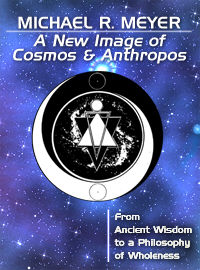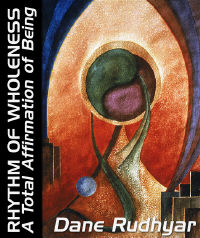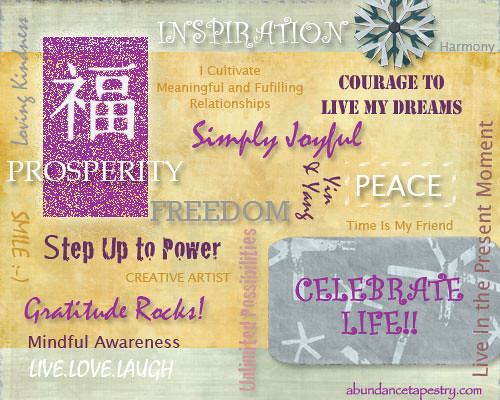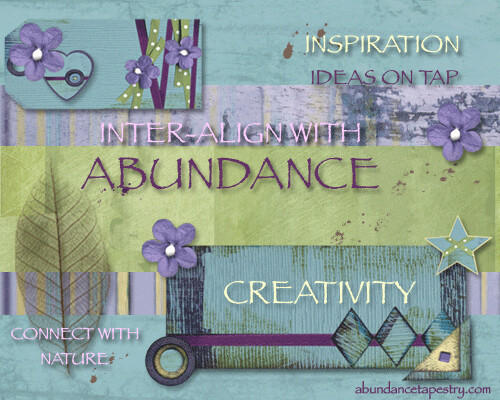Bản chất của hôn nhân theo tinh thần Phật giáo
Giác Ngộ - Được sự đồng thuận của ĐĐ. Thích Thiện Minh, dịch giả quyển sách Hôn nhân Hạnh phúc (A Happy Married Life) của Hòa thượng Sri K. Dhammananda, Giác Ngộ Online xin được lần lượt đăng các bài viết liên quan đến thiết lập tình yêu và giữ gìn hạnh phúc của bạn trẻ theo tinh thần Phật giáo từ quyển sách này. Qua đó, quý độc giả đặc biệt là các bạn trẻ sẽ hiểu tường tận về những lời dạy của đức Thế Tôn về nội dung hết sức cần thiết trong cuộc sống và tình yêu hiện nay.
Hôn nhân - Vấn đề lớn của con người
Hôn nhân và gia đình cũng là một vấn đề lớn được Phật Thích Ca giảng dạy trong kinh điển. Giáo lý của ngài mặc dù đặt trọng tâm trên nền tảng giải thoát, xuất ly thế gian, nhưng đệ tử của ngài đa phần còn đời sống tại gia, vì thế cho nên ngài phải có bổn phận giảng dạy cho họ sống đúng theo chánh pháp để có hạnh trong gia đình.
Trước khi thành Phật, ngài cũng phải trải qua một đời sống thế tục, có vợ, có con và ngài đã làm tròn bổn phận đối với họ. Ngài sống rất hạnh phúc với Da Du Ðà La, chưa bao giờ ngài làm cho hiền thê phiền lòng và ngược lại. Khi xuất gia thành chánh quả ngài trở về hoàng cung tiếp độ phụ hoàng, hiền thê và con thơ giác ngộ chánh pháp của chư Phật. Ðây là một món quà vô tiền khoáng hậu mà chưa có một người con, người chồng, người cha nào trên thế gian này thực hiện được.
Bản chất của tình yêu không phải là một chuyện xấu. Trong giáo lý của Ðức Phật, ngài không có bác bỏ vấn đề nam nữ yêu nhau, nhưng ngài dạy từ lúc yêu thương đến lúc chung sống nhau phải phù hợp với đạo lý của con người. Ngài dạy người nam và người nữ sống bên nhau phải có hạnh phúc. Hạnh phúc theo giáo lý của nhà Phật là phải có 5 giới và đồng thời ngài dạy người chồng phải có 5 bổn phận đối với người vợ, người vợ cũng vậy.
Hôn nhân là bổn phận trong cuộc sống đời thường
Theo quan điểm nhà Phật, hôn nhân không phải là thánh thiện cũng không xấu xa. Phật giáo không xem hôn nhân như là một bổn phận tôn giáo mà cũng không phải một lễ ban phước được an bài nơi cõi Trời. Người bi quan nói rằng trong lúc một số người tin rằng hôn nhân là do trời sắp đặt, những người khác lại nói nó cũng đã được ghi vào sổ ở cõi Âm ty địa ngục! Hôn nhân là một bổn phận cá nhân và xã hội, nó không phải là bắt buộc. Người đàn ông hoặc người phụ nữ có quyền tự do kết hôn hoặc ở độc thân. Ðiều này không có nghĩa là Phật giáo chống lại hôn nhân. Không ai trên thế gian này nói hôn nhân là điều tồi tệ, cũng chẳng có tôn giáo nào chống lại hôn nhân.
Thực tế, tất cả mọi sinh vật thành hình là do kết quả của đời sống tình dục. Giữa nhân loại, tập tục hôn nhân đã xảy ra, qua đó xã hội loài người đảm bảo được sự tồn tại và mặc nhiên lớp trẻ cần được quan tâm chăm sóc. Sự kiện này dựa trên sự tranh cãi cho rằng trẻ con được sanh ra do bởi dục lạc, chắc chắn cha mẹ chúng phải có trách nhiệm giáo dưỡng, ít nhất cho tới khi chúng trưởng thành. Và hôn nhân đảm bảo rằng trách nhiệm này cần được hậu thuẫn và thực thi.
Một xã hội phát triển qua một mạng lưới của những mối quan hệ có mối liên kết và hỗ tương lẫn nhau. Mỗi mối quan hệ là một sự cam kết chân thành để hỗ trợ và bảo vệ những người khác trong một nhóm hoặc một cộng đồng. Hôn nhân đóng một vai trò quan trọng trong mạng lưới của những mối quan hệ đem lại sự hỗ trợ và bảo vệ. Một cuộc hôn nhân tốt đẹp cần phải nuôi dưỡng và phát huy dần dần từ sự hiểu biết chứ không phải bốc đồng, từ lòng chân thành thật sự chứ không phải là sự thỏa mãn nhất thời.
Tập quán hôn nhân mang lại một nền tảng tốt đẹp cho sự phát triển văn hóa, một sự kết hợp đầy thú vị giữa hai cá nhân được chăm sóc và thoát khỏi cô đơn, mất mát và sợ hãi. Trong hôn nhân, người này phát huy một vai trò kết hợp hài hòa, đem lại sức mạnh và dũng khí cho người kia, mỗi người thể hiện sự nhận thức đầy thông cảm và giúp đỡ người khác trong việc chăm sóc và cung cấp cho gia đình. Ðừng có ý tưởng cho là đàn ông hoặc đàn bà là kẻ cả - người này kết hợp hài hòa với người kia, hôn nhân là một sự kết hợp bình đẳng, dịu dàng, bao dung, và an vui.
Trong nhà Phật, người ta có thể tìm thấy tất cả những lời khuyên cần thiết để người ấy có thể sống một cuộc sống hôn nhân hạnh phúc. Mọi người đừng bỏ qua lời dạy của đấng Giác Ngộ nếu thật sự muốn có một cuộc hôn nhân hạnh phúc. Trong những bài pháp của ngài, Ðức Phật có nhiều lời dạy khác nhau cho những cặp vợ chồng và cho những ai đang có ý định lập gia đình. Ðức Phật đã dạy rằng: "Nếu một người đàn ông có thể tìm được một người vợ, người phụ nữ thích hợp và hiểu biết và người phụ nữ có thể tìm được một người đàn ông thích hợp và hiểu biết, cả hai thật sự là may mắn."
Qua những gì đã chứng nghiệm về tình cảm mà người nam và người nữ dành cho nhau, Ðức Phật dạy rằng Ngài chưa bao giờ thấy bất cứ đối tượng nào trong thế gian này lại thu hút sự chú ý của người nam hơn là hình ảnh người nữ.
Phát khởi tình yêu chân thật
Có nhiều khuôn mẫu tình yêu khác nhau, và chúng được thể hiện khác biệt nhau như tình mẫu tử, tình phụ tử, tình huynh đệ, tình cảm, tình dục, tình yêu vị kỷ, và tình yêu vô lượng.
Nếu người ta chỉ phát huy tính nhục dục hoặc tình yêu ích kỷ đem lại cho người khác thì loại tình yêu này không thể bền vững. Trong mối quan hệ thương yêu chân thật, một người chồng chỉ quan tâm tới những khía cạnh tình yêu xác thịt, luôn nghĩ đến một người phụ nữ trẻ đẹp hơn. Loại tình yêu đó là tình yêu thú vật hoặc lòng dâm dục.
Nếu một người đàn ông thật sự phát huy tình yêu như là một sự biểu hiện mối quan tâm của con người với một con người, người này sẽ không đặt nặng vẻ đẹp bên ngoài và sự thu hút về thể xác của người phối ngẫu của mình. Vẻ đẹp và sự hấp dẫn của người phối ngẫu sẽ ở trong trái tim và tâm (hồn) của anh ta. Người vợ theo giáo pháp Ðức Phật không bao giờ bỏ bê người chồng của mình thậm chí khi anh ta già cả, nghèo khó hoặc bệnh tật.
"Tôi có một nỗi lo sợ rằng một cô gái tân thời muốn trở thành nàng Juliet để có một tá chàng Romeo. Cô ta thích phiêu lưu trong tình yêu ... Người con gái tân thời mặc quần áo không phải để bảo vệ thân thể khỏi nắng mưa, gió rét, nhưng để thu hút sự chú ý. Cô ta nâng cao bản chất bằng cách tô điểm thân xác và trong có vẻ khác thường." - (Gandhi)
Tình dục - Một biểu hiện của tình yêu
Bản thân tình dục không phải là "xấu xa". Nhưng sự cám dỗ và tham ái của nó đã quấy rầy sự an lạc của tâm, và như thế không dẫn đến sự phát triển tâm linh. Trong tình huống lý tưởng, tình dục là kết quả của một mối quan hệ tình cảm sâu sắc, ở đây cả hai bên cho và nhận bình đẳng.
Sự mô tả về tình yêu bởi những tập đoàn thương mãi qua hệ thống thông tin đại chúng theo chúng ta cho rằng "văn hóa phương Tây không phải là tình yêu thật sự". Khi một con thú hoang muốn tình dục, nó tỏ "tình yêu" của nó, nhưng sau khi thỏa mãn tình dục, nó liền quên đi cái "chữ tình". Ðối với loài thú, tình dục chỉ là bản năng cần thiết đưa đến sự sinh sản. Nhưng con người có nhiều hơn để dâng hiến trong khái niệm của tình yêu. Bổn phận và trách nhiệm là những thành phần quan trọng để duy trì sự hài hợp, đoàn kết , và hiểu biết trong một mối quan hệ giữa nhân loại.
Tình dục không phải là thành phần quan trọng nhất đối với hạnh phúc trong cuộc sống hôn nhân. Những người đã trở thành những kẻ nô lệ cho tình dục chỉ làm tan mất tình yêu và lòng nhân đạo trong hôn nhân. Ngoài điều đó ra, người phụ nữ phải ngừng ngay ý nghĩ xem mình như là một món đồ vật của lòng ham muốn của người đàn ông. Biện pháp khắc phục này nằm trong tay của phụ nữ hơn của người đàn ông. Cô ta phải từ chối việc trang điểm bản thân chỉ để làm hài lòng người đàn ông, ngay cả người chồng mình. Nếu cô ta muốn trở thành một người bình đẳng với một người đàn ông. Cô ta phải ăn mặc để chân giá trị của mình được nâng cao, và không bị trở thành một biểu tượng tình dục.
Thật sự tình yêu là sản phẩm của tình dục, nhưng điều trái ngược tương tự đúng như vậy: Tình dục là một biểu hiện của tình yêu. Trong cuộc sống hôn nhân hạnh phúc lý tưởng, cả tình yêu lẫn tình dục không thể tách rời nhau.
Lắng nghe lời dạy của Đức Phật
Qua những gì đã chứng nghiệm về những tình cảm mà người nam và người nữ dành cho nhau, Ðức Phật dạy rằng ngài chưa bao giờ thấy bất cứ đối tượng nào trong thế gian này lại thu hút sự chú ý của người nam hơn là hình ảnh người nữ. Cùng lúc ấy sự thu hút chính đối với người phụ nữ là hình ảnh người nam. Theo tự nhiên có nghĩa là, người nam và người nữ đem lại cho nhau lạc thú trần tục. Họ không thể đạt được hạnh phúc này ở những đối tượng khác. Khi chúng ta quan sát cẩn thận, chúng ta nhận thấy rằng trong tất những sự việc đem lại khoái lạc, không có đối tượng nào khác có thể làm thỏa mãn ngũ căn cùng một lúc ngoài hình ảnh của người nam, và người nữ.
Người Hy Lạp cổ đã biết được điều này khi họ nói rằng, khởi thủy của người nam và người nữ là một, họ bị tách rời và hai phần được chia sẻ ra đó liên tục tìm kiếm để tái hợp lại.
Theo tự nhiên, những người trẻ tuổi thích được hưởng thụ những niềm lạc thú trần tục mà chúng có thể là những điều tốt lẫn xấu. Những điều tốt như là sự thưởng thức âm nhạc, thi ca, khiêu vũ múa hát, thức ăn ngon, mặc đẹp và những theo đuổi tương tự thật sự không gây nguy hại cho cơ thể. Chúng chỉ làm cho chúng ta xao lãng không thấy được bản chất mong manh và bấp bênh của sự hiện hữu và do đó làm cho con người chúng ta không thể cảm nhận được bản chất thật của bản Ngã.
Ngũ quan và những cảm giác của người trẻ tuổi hết sức nhạy bén và tinh anh, họ rất thích được thỏa mãn ngũ căn. Hầu như mỗi ngày, họ dự tính và suy nghĩ về những phương cách để thỏa mãn dục lạc. Bởi chính ngay bản chất của cuộc sống, người ta chẳng bao giờ hoàn toàn thỏa mãn với bất cứ những khoái lạc mà chúng ta đã trải qua và kết quả bởi ham muốn đã liên tục chỉ tạo nên những sự khắc khoải và lo âu.
Khi một người không còn khát khao dục lạc và không tìm kiếm sự thoải mái xác thân cùng với người khác phái. Nhu cầu lập gia đình không còn phát sinh. Khổ và lạc thú trần tục cả hai là kết quả của lòng ham muốn, chấp thủ và cảm xúc. Nếu chúng ta cố gắng kiểm soát và đè nén những cảm xúc của mình bằng cách bắt chước những phương sách xa rời thực tế thì chúng ta chỉ tạo nên những băng hoại trong thâm tâm của mình. Do đó, chúng ta phải biết làm cách nào để điều khiển và kiểm soát sự đam mê của con người chúng ta. Không cư xử tệ bạc hoặc sử dụng sai trái sự đam mê này, chúng ta có thể huấn luyện những nỗi khát khao của chúng ta nhờ vào sự hiểu biết đúng đắn.
Bước vào con đường thương yêu
John J.Robinson trong cuốn sách của ông ta với nhan đề "Of Suchness" đã đưa ra lời khuyên sau đây về tình yêu, tình dục và hôn nhân. "Hãy cẩn thận và khôn ngoan để lập gia đình thì dễ dàng hơn nhiều so với ở độc thân". Nếu bạn có một người bạn đời đúng mực, đó là bạn đang sống ở cõi thiên đàng; nhưng nếu không, bạn sẽ trải qua một ngày 24 giờ trong địa ngục. Ðiều này đã liên tục bám víu bạn, có lẽ nó là một trong nhiều điều cay đắng nhất trong cuộc đời.
Cuộc đời thật ư là lạ lùng. Bằng cách này hay cách khác, khi bạn tìm được một người ưng ý, bạn giữ nó ở trong lòng. Ðiều đó không chỉ là sự mê đắm của một khoảnh khắc. Nhưng của tình dục lôi kéo người trai trẻ đó tiến về phía trước bằng những hành động mù quáng quá mức và người ta không tin tưởng quá nhiều vào tình cảm của mình. Ðây là một sự thật, đặc biệt nếu một ai đó uống rượu và bị say; một người đàn bà dơ bẩn nhếch nhác trong quán rượu mờ tối sau đó, có thể trông giống như thần Vệ Nữ (Venus) và những nét duyên dáng của cô ta khiến chúng ta không cưỡng lại được. Tình yêu thì tràn đầy nhiều hơn ý tưởng tình dục, nó là nền tảng sinh học giữa người đàn ông và đàn bà, tình yêu và tình dục đan kết lẫn nhau và hòa lẫn với nhau."
Sự quan trọng của niềm tin
Hầu như mỗi ngày, chúng ta thường nghe mọi người than phiền về những cuộc hôn nhân của họ. Chúng ta thật sự ít khi nghe những câu chuyện về một cuộc hôn nhân hạnh phúc. Lớp người trẻ tuổi đọc cuốn tiểu thuyết tình cảm lãng mạn và xem những cuốn phim trữ tình thường đi đến kết luận hôn nhân là một khu vườn hoa hồng. Nhưng bất hạnh thay, hôn nhân không ngọt ngào như người ta tưởng. Hôn nhân và các vấn đề thì liên hệ với nhau và người ta phải nhớ rằng khi sắp lập gia đình, sẽ phải đối mặt với những vấn đề và những trách nhiệm mà họ chưa bao giờ ngờ tới hoặc cảm thấy.
Mọi người thường nghĩ rằng kết hôn là một bổn phận và hôn nhân là một sự kiện quan trọng trong cuộc đời của họ. Tuy vậy, để đảm bảo một cuộc hôn nhân tốt đẹp, một cặp vợ chồng phải hòa thuận trong cuộc sống lứa đôi, bằng cách giảm tối thiểu bất cứ những gì khác biệt có thể xảy ra giữa hai người. Một người bi quan nói về cách vấn đề hôn nhân gia đình như vầy: chỉ có thể có một cuộc sống hôn nhân an vui nếu như cuộc hôn nhân đó xảy ra giữa một người vợ mù và một người chồng điếc, bởi vì người vợ mù không thể trông thấy những lỗi lầm của người chồng và ngược lại người chồng điếc không thể nghe lời oán than trách móc của người vợ.
Một trong những nguyên nhân chính của các vấn đề hôn nhân là sự nghi ngờ và mất lòng tin. Hôn nhân là một điều tốt lành nhưng nhiều người cho nó là điều tai họa do bởi thiếu sự hiểu biết.
Cả người chồng lẫn người vợ phải tỏ bày sự tin tưởng lẫn nhau và cố gắng không có những điều bí mật giữa hai người. Những điều giấu kín tạo nên sự nghi ngờ, nghi ngờ dẫn đến ghen tuông, ghen tuông tạo nên hờn giận, hờn giận tạo nên hận thù và hận thù có thể dẫn đến sự chia lìa, tự sát hoặc thậm chí bị giết.
Nếu một cặp vợ chồng có thể chia sẻ nỗi đau khổ và niềm vui trong đời sống hàng ngày của họ, họ có thể củng cố cho nhau và giảm tối thiểu những lời than van trách móc. Như vậy, người vợ, hoặc chồng đừng mong đợi chỉ hưởng những niềm vui. Vì sẽ có rất nhiều nỗi đớn đau, những thử thách mà họ sẽ phải đối mặt. Họ phải có một ý chí mạnh mẽ để giảm bớt gánh nặng và những sự hiểu lầm. Những vấn đề được đem ra bàn thảo với nhau sẽ mang lại cho họ niềm tin để sống cùng với sự hiểu biết tốt đẹp hơn.
Ðàn ông và đàn bà cần sự thoải mái với nhau khi đương đầu với những vấn đề và những khó khăn. Những cảm giác mất an toàn và dao động sẽ biến mất và cuộc sống sẽ càng có ý nghĩa hơn, hạnh phúc và thú vị hơn nếu như có ai đó sẵn lòng chia sẻ gánh nặng của kẻ khác.
Yêu bằng con tim hay bằng lý trí
Khi hai người đang yêu nhau, họ thường có khuynh hướng cho thấy những khía cạnh tốt đẹp nhất về bản chất và cá tính của họ để tạo ra một ấn tượng tốt đẹp về họ. Người ta bảo tình yêu có khi là mù quáng và do đó những người đang yêu nhau thường trở nên hoàn toàn lộ rõ ra những khía cạnh xấu xa hơn về những bản chất của nhau.
Nhưng thực tế, mỗi bên sẽ cố gắng đề cao những phẩm chất xuất sắc của mình, vào như vậy là họ bị cuốn hút vào tình yêu, họ thường chấp nhận nhau chỉ theo "giá trị bên ngoài". Mỗi người thường che giấu những khía cạnh xấu và lo sợ mất nhau. Bất cứ những khuyết điểm nào cũng được che giấu, để không làm mất đi những cơ hội để họ được gần nhau. Những người đang yêu cũng thường bỏ qua những lỗi lầm của người mình yêu và nghĩ rằng họ sẽ có thể sửa đổi chúng sau khi kết hôn, hoặc là họ có thể sống với những lỗi lầm này, vì "tình yêu chiến thắng tất cả".
Tuy nhiên, sau hôn nhân, lúc ấy những tâm trạng lãng mạn thuở ban đầu tàn úa dần, bản chất thật của mỗi người sẽ được lộ ra. Và khi đó, hai bên sẽ gặp phải nhiều thất vọng, những lời nói gấm hoa, những tình cảm tốt đẹp nhường lại cho sự chán chường và thất vọng. Và rồi lúc đó chỉ còn là ảo mộng.
Bản chất của tình yêu không phải chỉ dựa vào không khí trong lành và ánh nắng mặt trời. Thế giới ngày nay là một thế giới thực dụng và để thỏa mãn những nhu cầu vật chất của bạn, những khoản tài chính và ngân sách là cơ bản, không có nó, chẳng có gia đình nào có thể sống thoải mái. Ở một tình huống như thế thật đúng với câu châm ngôn: "Khi sự nghèo khó gõ cửa nhà bạn, thì tình yêu đội nón ra đi". Ðiều này không có nghĩa là người ta phải giàu có mới có một cuộc hôn nhân. Tuy nhiên, một người có những tiện nghi vật chất, một công việc ổn định và kế hoạch chu đáo thì những khó khăn khó có thể xảy ra khi tiến tới hôn nhân.
Sự xung đột vì nghèo khó có thể vượt qua được nếu có sự hiểu biết rốt ráo giữa vợ chồng. Cả hai bên phải hiểu biết giá trị của sự mãn nguyện. Cả hai đều phải giải quyết tất cả các vấn đề như là "những vấn đề của đôi ta" và chia sẻ tất cả những "thăng trầm" bằng tình cảm chân thật của cuộc sống lứa đôi bền vững.
Kinh Anguttara Nikàya có ghi lại lời khuyên rất giá trị của Ðức Phật cho những cô gái trẻ trước khi bước vào ngưỡng cửa hôn nhân. Ngài dạy rằng cô dâu mới về nhà chồng, có thể gặp phải những khó khăn, nàng dâu phải tuân thủ những nguyên tắc mới để thể hiện lòng kính trọng bố mẹ nhà chồng, phục vụ họ thật chu đáo như là bố mẹ ruột của mình. Mọi người mong đợi họ phải tôn trọng và kính mến thân nhân và bạn hữu bên nhà chồng, như vậy cô dâu mới tạo nên một bầu không khí hạnh phúc và hòa hợp trong mái ấm gia đình nhà chồng.
Họ cũng được khuyên bảo nên tìm hiểu những bản tánh của người chồng, biết tường tận những hoạt động, tính khí của chồng mình, và cộng sự ở mọi lúc trong mái nhà mới của mình. Họ phải lịch sự, tử tế và biết những thu nhập của chồng để biết đó là khoản chi tiêu của gia đình mà họ phải biết và quản lý tốt. Lời dạy của Ðức Phật đã có hơn 25 thế kỷ nhưng cho đến ngày nay vẫn còn hiệu lực











 by
by 







